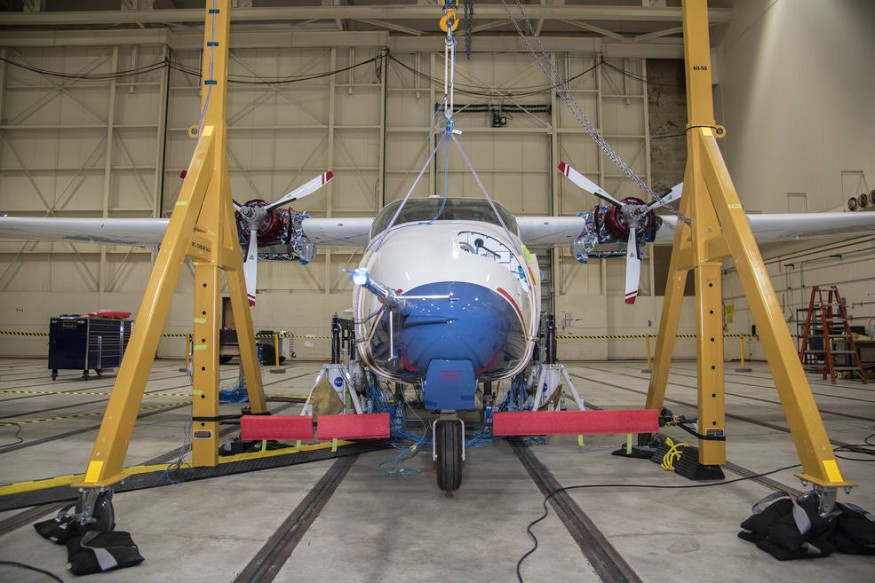NASA's first all-electric X-plane, the X-57 Maxwell, makes substantial strides as it will soon undergo high-voltage functional ground testing at NASA's Armstrong Flight Development Facility in Edwards, California.

As NASA continues from the part design and prototype process to the vehicle's activity as an integrated aircraft, the latest update marks a significant milestone for the program.
For this step of testing, the X-57, now in its first design as an electric aircraft, dubbed Mod 2, would use a battery support device, drawing power from a massive, high-voltage power source as the battery management system of the X-plane is approaching completion.
How NASA Will Carry Out X-57's Ground Testing
NASA said the crew will start the test by doing low power voltage checks, checking the sequences of startup and shutdown, and verifying if the latest software for motor control boots up and regulates the engines as expected.
Engineers recently revamped the X-57's software and other components. They based the improvements from the lessons they learned from the previous testing by the project's prime contractor, Empirical Systems Aerospace (ESAero) of San Luis Obispo, California.
NASA is set to begin high voltage ground testing on our 1st all-electric X-plane, the X-57 Maxwell!
— NASA Armstrong (@NASAArmstrong) February 25, 2021
✈️
It will help pave the way for certification of future electric aircraft, & will demonstrate a 500% increase in efficiency w/ 0 inflight carbon emissions. https://t.co/V0dDR7bvj0 pic.twitter.com/mzmKxDKf5A
Such checks would require the vehicle's higher-power operation. The first pair of electric cruise motors supplied by ESAero to fly on the X-57 will be charged up and enabled, helping engineers ensure that the vehicle's propellers turn as intended.
This would be accompanied by throttling the engines to ensure that they have all the needed fuel, validating the plane's instrumentation device, and testing if all the sensors mounted in the aircraft are working.
This high-voltage testing, a crucial final phase before taxi tests, will feed directly into final verification and validation testing.
Why Is NASA Investing in Experimental Planes?
NASA's chief investigator, Sean Clarke, told Business Insider that many NASA-developed X-plane aircraft have been autonomous during the last 10 to 20 years. The Maxwell comes into the "experimental aircraft" division of NASA's X-plane. This X-57 is the first X-plane piloted in 20 years.
The decision to place a pilot in the Maxwell came because [quote] Clarke said NASA's test pilots were. Getting pilots on the aircraft simplifies its configuration and, when flying the aircraft, the pilot may detect and identify problems.
The inspiration for the 'Maxwell' moniker of the X-57 came from a scientist who worked in electromagnetism in the 19th century: James Clerk Maxwell.
According to Clarke, NASA agreed to focus on this X-57 Maxwell project when it began to see an improvement in accessibility to light but "reliable" motors and motor controllers.
"We [started] to think of using [these technologies] in an interesting way to redesign how an aircraft could behave," Clarke said.
In addition, NASA needed to work out how to transfer an aircraft's propulsion system to another position while also changing its wing to give the aircraft a high but powerful cruising speed.
The X-57 could increase flight performance by 500 percent, New Atlas said. Such spacecraft is expected to cruise at high speed while producing no in-flight pollution and far less noise when completely formed than traditional aircraft.
RELATED ARTICLE : NASA's Dawn Spacecraft Returns To Normal After Experiencing Wheel Malfunctions On Sunday:Ceres Observation Continues
Check out more news and information on Space on Science Times.












